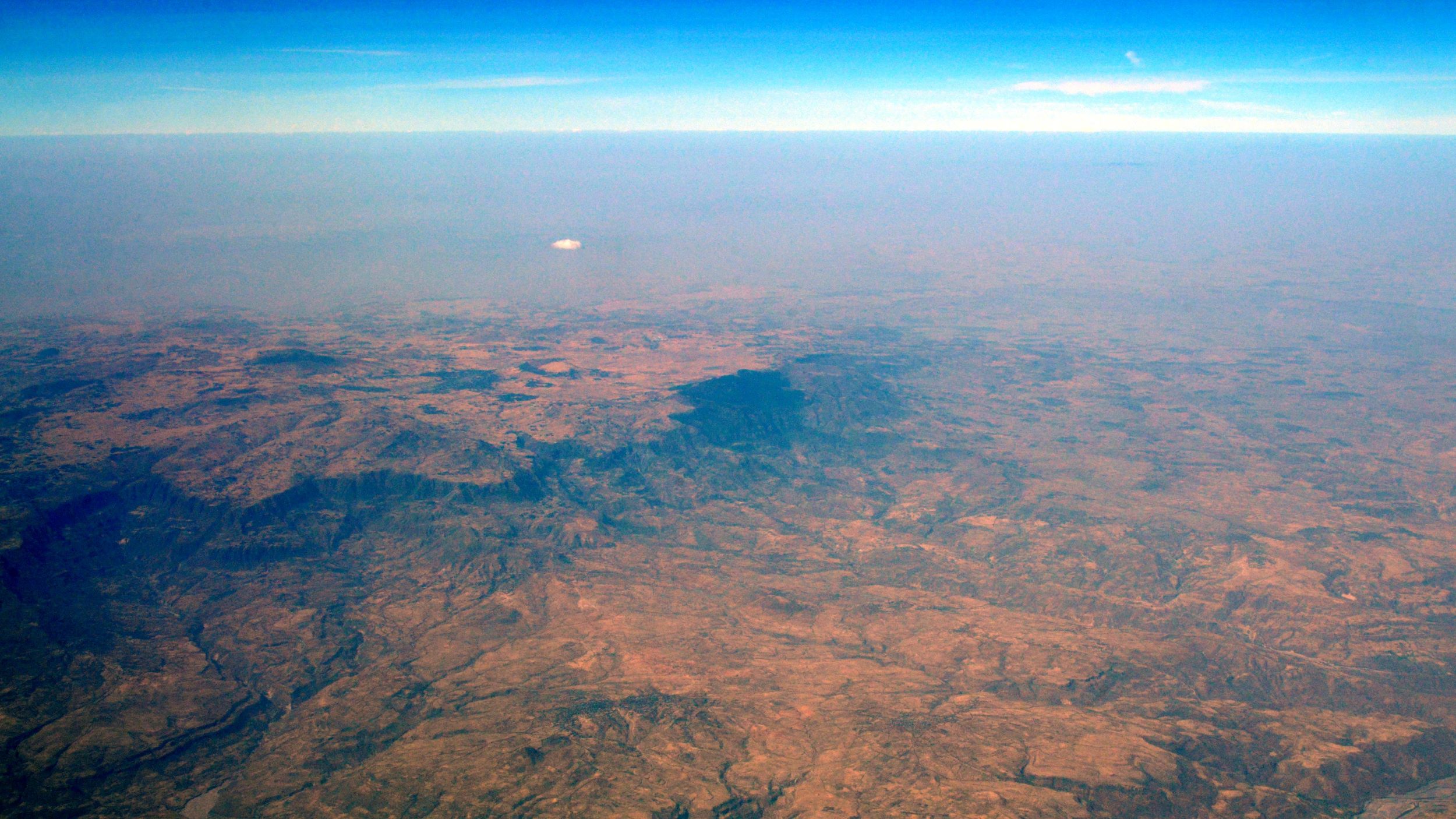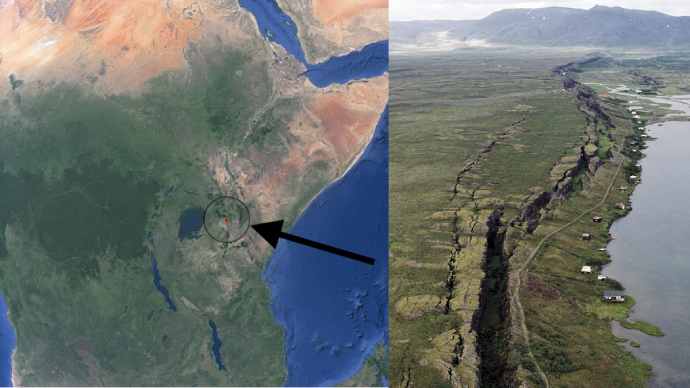
A giant rift could split Africa in two and create a new ocean
The East African Rift, a huge rift that runs across Africa, could split the continent in two to gently give birth to a new ocean. A recent study suggests that the phenomenon is driven by the African Superthrust, a massive ejection of superheated rock from the planet’s core. This finding, based on 3D models and GPS data, provides valuable information on tectonic forces and can therefore help us predict impacts on local populations.
The African continent is going through a major geological shift that could eventually split it in two and redraw the world map. At the heart of this phenomenon is the East African Rift, a massive fissure that spans nearly 3,500 kilometers. This rupture of the earth’s crust, which is widening by about 2.5 cm per year, is attracting the attention of scientists around the world.
A recent study sheds light on the forces at play in this process of continental rifting, highlighting the key role of the massive African silk, a massive ejection of superheated rock from the planet’s core. The implications of the study are broad, ranging from a better understanding of tectonic processes to predicting impacts on local populations. The team of scientists’ work, led by Professor Sarah Stamps of Virginia Tech and Tahiri Rajaonarisson, a postdoctoral researcher at New Mexico Tech, is published in the journal
Journal of Geophysical Research: Solid Earth.
Wear a powerful climate message and breathe deeply the scent of awareness emanating from those who dare to read your message to the end. 🌍
An ongoing geological phenomenon
The East African Rift (REA) is a major geological phenomenon currently occurring on the African continent. This huge rift crosses several countries, from Ethiopia in the north to Mozambique in the south. It represents a gradual rupture of the Earth’s crust, a process known as a continental rift.
Continental rifting is caused by deformation of the lithosphere, the planet’s most rigid outer layer. As the lithosphere expands, its shallower parts can deform in various ways.
Every year, the REA widens by about 2.5 cm, a slow but steady movement that is gradually changing the geography of Africa. If this process continues at its current rates, the African continent may eventually split into two distinct parts. This division would create a new ocean, and dramatically change the map of the world as we know it today.
REA is not a new phenomenon. Scientists estimate that this rifting process began about 22 million years ago. However, activity has intensified in recent decades. This acceleration has generated a renewed scholarly interest in regional environmental assessment and its implications for the future of Africa.

Status and outcomes of the East African Rift. © Globalchannel.com
The role of the African giant
It should be noted that the direction in which the Earth’s surface deforms at continental rifts is generally perpendicular to the length of the rift. Researchers have been able to examine the East African Rift for more than 12 years, thanks to data from GPS stations that measured signals from more than 30 satellites orbiting Earth, some 25,000 kilometers away.
Then they were able to confirm that the deformation is orthogonal and moves east and west. However, they also observed deformation parallel to the fault, moving north, he reported communication the study. In fact, the Stamps team explored the processes driving the East African Rift System using 3D thermomechanical modeling developed by Tahiry Rajaonarison.
You want to remove ads from the site
While continuing to support us ?
It’s simple, just sign up!
At the moment, 20% off On the annual subscription!
His models showed that the unusual, parallel fault deformation of the rift system is driven by the northward mantle flow associated with the African Supervolcano, a large uplift of the mantle that rises from the Earth’s depths below southwest Africa and heads northeast across the continent, becoming shallower as it widens northward.
influences on local life
As scientists continue to investigate these geographic phenomena, the emergence of new cracks that indicate this constant change is being monitored. A 56-kilometer crack appeared in 2005 already indicating the formation of a new sea near Ethiopia. In addition, another rip occurred in Kenya in 2018 after heavy rains, causing evacuations and blocking roads. Residents are already suffering the consequences of these geological disturbances, seeing their homes collapse or disappear along with all their possessions.
Although Africa will not completely separate for at least five million years, scientists continue to closely monitor the East African Rift and its effects. Understanding more about the processes involved in continental rifting, including these anomalous phenomena, will help scientists decipher the complexity behind continent break-up, a task they have been trying to accomplish for decades.
source : Journal of Geophysical Research: Solid Earth

“Incurable web evangelist. Hipster-friendly gamer. Award-winning entrepreneur. Falls down a lot.”
